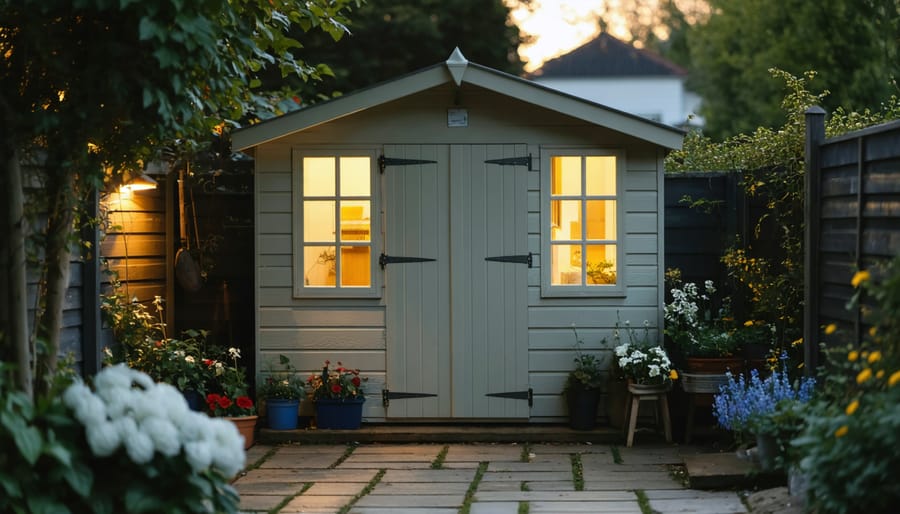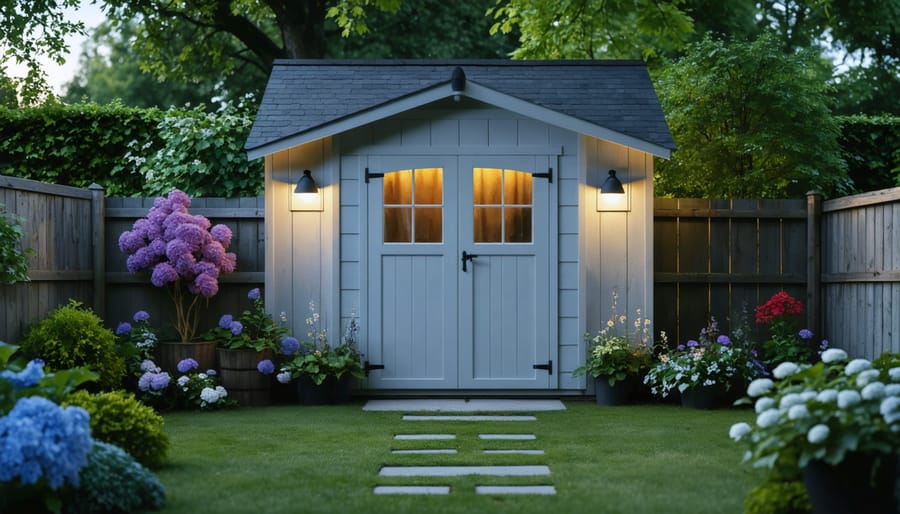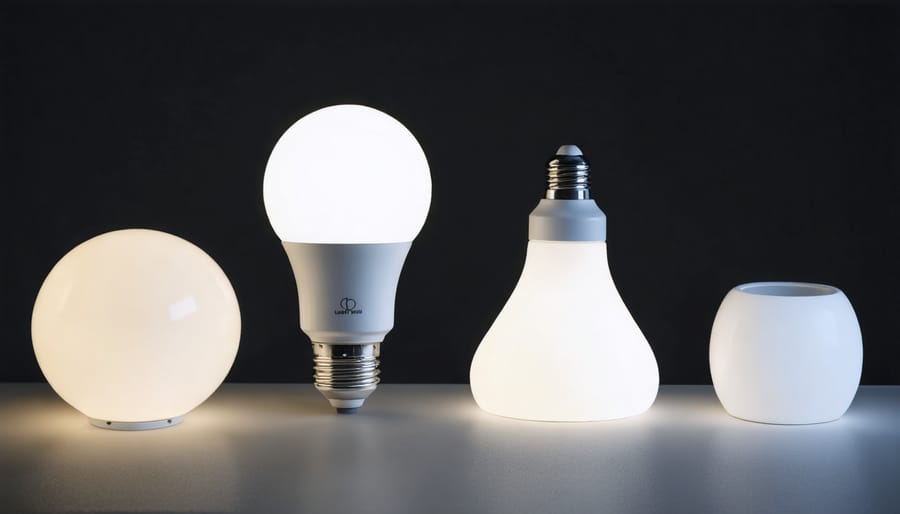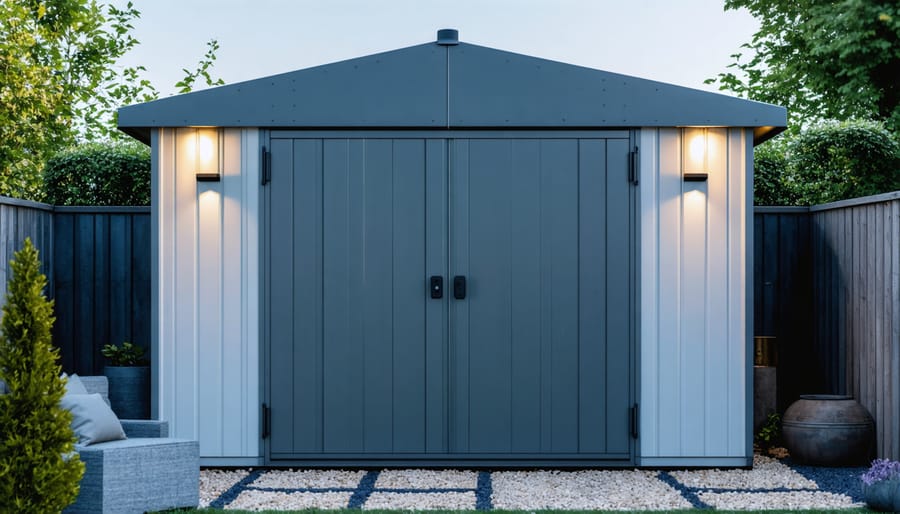Smart Shed Lighting Made Simple: Control Your Space from Anywhere

Transform your shed’s lighting experience with modern smart interior lighting solutions that put complete control at your fingertips. Wireless lighting control systems eliminate complex wiring, reduce energy costs, and enhance security through programmable schedules and motion detection. These systems seamlessly integrate with smartphones and voice assistants, allowing you to adjust brightness, color temperature, and timing from anywhere. Whether you’re organizing tools at dawn or securing equipment after dusk, automated lighting adapts to your schedule while cutting energy waste by up to 50%. Modern wireless systems now offer battery-powered options and solar integration, making installation possible even in sheds without existing electrical infrastructure. The convenience of automated scheduling, remote access, and smart sensors transforms basic storage into an efficient, accessible workspace any time of day.

Why Your Shed Needs Smart Lighting Control
Safety and Security Benefits
A wireless lighting control system significantly enhances your shed’s safety and security features. Motion detection capabilities automatically illuminate your path when approaching the shed, deterring potential intruders while preventing trips and falls in dark conditions. You can set automated schedules to make your shed appear occupied even when you’re away, creating a reliable security presence.
Remote monitoring through your smartphone lets you check on your shed’s lighting status from anywhere, offering peace of mind during vacations or late nights. If you forget to turn off the lights, you can do so remotely, saving energy and avoiding unnecessary worry. Many systems also send instant notifications when motion is detected, keeping you informed of any unusual activity.
These smart features work together to create a protective shield around your valuable tools and equipment, making your shed safer and more secure than ever before.
Energy Savings and Convenience
Wireless lighting control systems offer a smart way to reduce energy costs while making shed lighting management effortless. With motion sensors and automated schedules, lights only operate when needed, eliminating energy waste from forgotten switches. Many systems report showing energy savings of up to 50% after installation, making them a cost-effective investment for shed owners.
The convenience factor is equally impressive. Adjust lighting levels, create custom schedules, and control multiple fixtures from your smartphone – no more fumbling for switches in the dark. These systems can even send notifications when lights are left on or when motion is detected, adding an extra layer of security. For those chilly winter mornings or late evening projects, you can turn on the lights before heading to your shed, ensuring a well-lit, welcoming space upon arrival. The user-friendly apps make it simple for anyone in the family to manage the lighting, regardless of their tech-savviness.
Components of a Wireless Shed Lighting System
Smart Bulbs and Fixtures
Modern smart bulbs and fixtures have revolutionized how we light our spaces. LED smart bulbs are the most popular choice, offering both energy efficiency and color-changing capabilities. These bulbs can switch between warm white light for comfort and bright white light for task-focused activities. Many models also feature full RGB color spectrum options, allowing you to create the perfect ambiance for any occasion.
Smart fixtures come in various forms, from ceiling-mounted panels to strip lights that can be installed under shelves or along pathways. These fixtures often include built-in motion sensors and dimming capabilities, making them perfect for automatic lighting control. Some advanced models even offer tunable white light, which can adjust color temperature throughout the day to match natural lighting patterns.
Look for bulbs and fixtures that are compatible with major smart home platforms like Zigbee or Z-Wave for seamless integration. Most options are rated for indoor and covered outdoor use, with some specifically designed for full weather exposure. When selecting your smart lighting, consider the lumens output, color rendering capabilities, and expected lifespan to ensure they meet your specific needs.

Control Hubs and Apps
Modern wireless lighting control systems offer multiple ways to manage your lights, making them both convenient and user-friendly. Most systems come with a dedicated smartphone app that serves as your primary control center, allowing you to adjust brightness, create schedules, and set up automation rules from anywhere. These apps typically work through WiFi or Bluetooth connections, giving you the flexibility to control your lights even when you’re away from home.
Many manufacturers also provide physical hub devices that act as the central brain of your lighting system. These hubs connect to your home network and can integrate with popular smart home platforms like Amazon Alexa, Google Home, or Apple HomeKit. This integration enables voice control capabilities and allows your lights to work seamlessly with other smart devices in your home.
For those who prefer traditional controls, most systems include wireless wall switches or remotes that can be mounted anywhere without complex wiring. These physical controls are perfect for quick adjustments and serve as a reliable backup when your phone isn’t handy.

Installation Made Easy
Planning Your Setup
Before diving into your wireless lighting system installation, take time to assess your specific needs and create a solid plan. Start by mapping out your space and identifying key areas that require lighting. Consider factors like natural light sources, traffic patterns, and the activities you’ll be performing in different areas.
Make a list of the lighting fixtures you want to control, including both existing and new installations. Think about how you’d like to group these lights and what control scenarios would be most useful. For example, you might want all exterior lights on one circuit and interior lights on another.
Next, determine your preferred control methods. Do you want smartphone control, wall-mounted switches, motion sensors, or a combination? Consider how many family members will need access to the system and their comfort level with technology.
Take measurements of your space and note the distances between fixtures and potential controller locations. This helps ensure your chosen system’s wireless range will be sufficient. Don’t forget to account for any metal structures or thick walls that might interfere with wireless signals.
Lastly, set a realistic budget that includes not just the main components but also any additional sensors or switches you might need for complete coverage.
Connection and Configuration
Setting up your wireless lighting control system is straightforward when you follow these simple steps. Start by installing the main control hub near your electrical panel or in a central location with good WiFi coverage. Most modern systems connect directly to your home network through a dedicated app on your smartphone.
Next, replace your existing light switches with smart switches or install smart bulbs in your current fixtures. Each component needs to be paired with the hub – simply press and hold the pairing button on each device while in discovery mode through your app. The app will guide you through naming each light and assigning it to specific rooms or zones.
For optimal performance, ensure your WiFi signal reaches all areas where smart lighting components are installed. If needed, consider adding a WiFi extender to boost coverage in remote areas. Many systems also work with voice assistants like Alexa or Google Home – just enable the relevant skill in your assistant’s app.
Create schedules and scenes based on your preferences. You might want lights to turn on automatically at sunset or set up motion-activated lighting for security. Remember to test each component thoroughly and keep your system’s firmware updated for the best performance and security.
Practical Tips and Common Solutions
Extending Wi-Fi Range
Ensuring reliable Wi-Fi connectivity to your shed is crucial for a seamless wireless lighting control system. The simplest solution is installing a Wi-Fi extender or repeater halfway between your home router and shed. These affordable devices amplify your existing signal, creating a stronger connection for your smart lighting setup.
For larger properties, consider a mesh Wi-Fi system, which creates a network of connected access points. This provides consistent coverage across your entire property, eliminating dead zones and ensuring your lighting controls respond instantly.
If your shed is particularly far from your house, a dedicated outdoor Wi-Fi access point might be your best option. These weather-resistant units can be mounted on your home’s exterior wall facing the shed, providing a strong, direct signal.
Remember to position any Wi-Fi extending device high up and away from metal objects or thick walls that could interfere with the signal. A clear line of sight between devices will always yield the best results.
Weather Considerations
Weather can significantly impact your wireless lighting control system’s performance and longevity. To weatherproof your lighting system, focus on protecting all components from moisture, extreme temperatures, and direct sunlight. Install weather-resistant covers over outdoor sensors and ensure all connections are properly sealed. During winter, monitor battery life more frequently as cold temperatures can reduce battery efficiency. In summer, provide adequate ventilation to prevent overheating of control units.
Regular maintenance checks should include inspecting seals, cleaning sensor surfaces, and checking for water damage or corrosion. Consider installing a dehumidifier in your shed if you live in a particularly humid climate. For areas prone to electrical storms, adding surge protection can safeguard your system from power fluctuations. Remember to keep spare batteries on hand and store them in a cool, dry place to maintain their effectiveness.
Wireless lighting control systems represent a game-changing solution for modern shed owners, offering unprecedented convenience, energy efficiency, and enhanced security. By implementing these smart controls, you’ll enjoy the ability to manage your shed’s lighting from anywhere, reduce energy waste through automated schedules, and create a safer environment around your storage space. The installation process is straightforward, and the long-term benefits far outweigh the initial investment. Whether you’re organizing tools late at night or need to check on your storage space remotely, these systems provide peace of mind and practical functionality. Take the step toward modernizing your shed with wireless lighting controls – you’ll wonder how you ever managed without this smart solution. The future of shed lighting is here, and it’s more accessible than ever.

